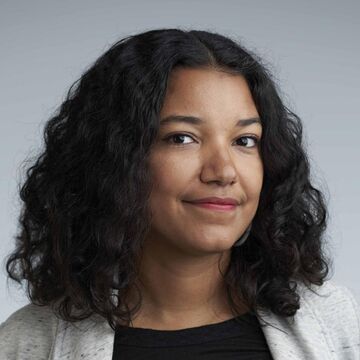| Beginning Screenprinting |
Printmedia |
2005 (001) |
Fall 2025 |
|
Description
In this course, students acquire technical proficiency in the various stencil printing methods. Individual exploration and development in the medium is encouraged and supported by individual instruction and group critiques.
|
Class Number
1600
Credits
3
|
| Beginning Screenprinting |
Printmedia |
2005 (002) |
Spring 2026 |
|
Description
In this course, students acquire technical proficiency in the various stencil printing methods. Individual exploration and development in the medium is encouraged and supported by individual instruction and group critiques.
|
Class Number
2133
Credits
3
|
| Drawn to Print |
Fiber and Material Studies |
2016 (001) |
Spring 2026 |
|
Description
A drawing is made whenever an object in motion touches the surface of another and evidence of their meeting is left behind. Images will be generated by examining a range of traditional and contemporary drawing techniques with an emphasis on analog processes and material exploration. Whether one?s style is gestural and improvisational or systemic and detail-oriented, drawing will be used as a device to access ideas and expand conceptual vocabulary. Printmaking then becomes an extension of the drawing process, infusing a richness of surface, color, texture, and layering. Examining the physical relationship between drawing and printing is a priority, with a focus on direct printing techniques such as monoprinting and heat transfers alongside hand-painting and collage. A strong emphasis will be placed on developing a personal and innovative visual language, as well as challenging notions of scale, site and material.
Readings, slide presentations and field trips will focus on course related topics.
Students present finished and in-process works at three critiques throughout the semester.
|
Class Number
1407
Credits
3
|
| PRINT: Printmedia Platforms |
Printmedia |
3923 (001) |
Spring 2026 |
|
Description
Students will develop professional practices including collaborative and independent work situations, via roles as commissioned artist, master printer, or artist-designer. Students will seek real-world clients to complete assignments, foster relationships with graphic designers, small presses, or their artist peers. Contemporary alternative print production and distribution models such as the integration of art, music and publishing prevalent in DIY scenes (1990s and 2000s), to emerging artist multiple/subscription programs and book/print fairs will be also be studied.
|
Class Number
1583
Credits
3
|
| Advanced Fiber and Material Studies Studio |
Fiber and Material Studies |
4005 (001) |
Fall 2025 |
|
Description
This course provides an interdisciplinary forum for in-depth critiques and exploration of students' individual directions within the context of contemporary art. This is a team-taught class and will utilize both instructors for critiques and group activities. Emphasis is on individual studio practice and the development of a more cohesive body of work within a faculty mentorship and peer-to-peer learning structure. Technical and conceptual input will be provided on a tutorial basis. Group discussions, readings, field trips to current exhibitions, and visiting lecturers augment this class. Professional practices will focus on the creation and display of discrete objects and/or installation work for the BFA Exhibition, supported by developing or refining a professional resume and an artist statement. Documentation of individual work for inclusion on the Fiber & Material Studies web page is also required. The print, dye, sewing, and mixed media facilities of the department are available to enrolled students to use. This class is for a minimum of 6 credit hours and is held weekly over a two-day period on Tuesdays and Thursdays. Open to Juniors and Seniors with instructor permission and signature. Course work varies but typically includes the production of major studio projects for critique, student presentations, professional development assignments, documentation of work, and the installation of work in the class display case and an open studio event.
|
Class Number
1448
Credits
6
|
| FIBER: Adv Fiber & Mat Studies Studio |
Fiber and Material Studies |
4908 (001) |
Fall 2025 |
|
Description
This course provides an interdisciplinary forum for in-depth critiques and exploration of students' individual directions within the context of contemporary art. This is a team-taught class and will utilize both instructors for critiques and group activities. Emphasis is on individual studio practice and the development of a more cohesive body of work within a faculty mentorship and peer-to-peer learning structure. Technical and conceptual input will be provided on a tutorial basis. Group discussions, readings, field trips to current exhibitions, and visiting lecturers augment this class. Professional practices will focus on the creation and display of discrete objects and/or installation work for the BFA Exhibition, supported by developing or refining a professional resume and an artist statement. Documentation of individual work for inclusion on the Fiber & Material Studies web page is also required. The print, dye, sewing, and mixed media facilities of the department are available to enrolled students to use. This class is for a minimum of 6 credit hours and is held weekly over a two-day period on Tuesdays and Thursdays. Open to Juniors and Seniors with instructor permission and signature.
Course work varies but typically includes the production of major studio projects for critique, student presentations, professional development assignments, documentation of work, and the installation of work in the class display case and an open studio event.
|
Class Number
1458
Credits
6
|

